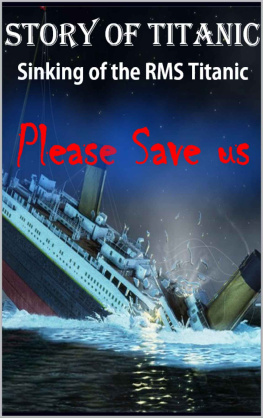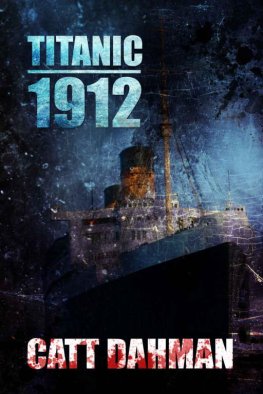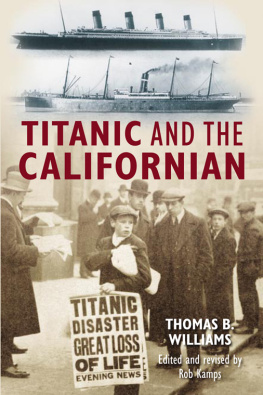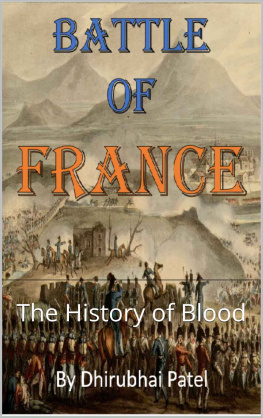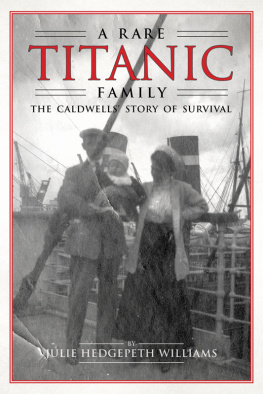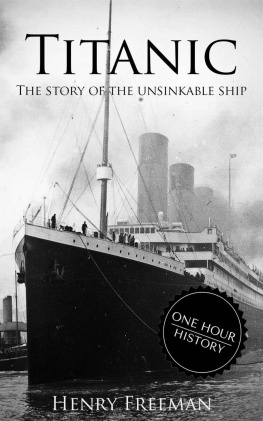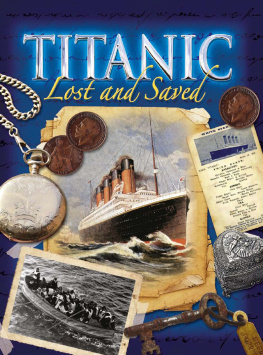Patel - Story of Titanic : Please Save us
Here you can read online Patel - Story of Titanic : Please Save us full text of the book (entire story) in english for free. Download pdf and epub, get meaning, cover and reviews about this ebook. year: 2021, genre: Home and family. Description of the work, (preface) as well as reviews are available. Best literature library LitArk.com created for fans of good reading and offers a wide selection of genres:
Romance novel
Science fiction
Adventure
Detective
Science
History
Home and family
Prose
Art
Politics
Computer
Non-fiction
Religion
Business
Children
Humor
Choose a favorite category and find really read worthwhile books. Enjoy immersion in the world of imagination, feel the emotions of the characters or learn something new for yourself, make an fascinating discovery.
- Book:Story of Titanic : Please Save us
- Author:
- Genre:
- Year:2021
- Rating:3 / 5
- Favourites:Add to favourites
- Your mark:
- 60
- 1
- 2
- 3
- 4
- 5
Story of Titanic : Please Save us: summary, description and annotation
We offer to read an annotation, description, summary or preface (depends on what the author of the book "Story of Titanic : Please Save us" wrote himself). If you haven't found the necessary information about the book — write in the comments, we will try to find it.
Patel: author's other books
Who wrote Story of Titanic : Please Save us? Find out the surname, the name of the author of the book and a list of all author's works by series.
Story of Titanic : Please Save us — read online for free the complete book (whole text) full work
Below is the text of the book, divided by pages. System saving the place of the last page read, allows you to conveniently read the book "Story of Titanic : Please Save us" online for free, without having to search again every time where you left off. Put a bookmark, and you can go to the page where you finished reading at any time.
Font size:
Interval:
Bookmark:
Story of Titanic
Chapter 1 : Titanic Story
1.1 Dimensions and layout
1.2 Features
1.3 Technology
1.4 Passenger facilities
1.5 Mail and cargo
1.6 Lifeboats
Chapter 2: Building and preparing the ship
2.1 Sea trials
Chapter 3: Maiden voyage
3.1 Crew
3.2 Passengers
3.3 Collecting passengers
3.4 Atlantic crossing
3.5 Sinking
Chapter 4 : Aftermath of sinking
4.1 Insurance, aid for survivors and lawsuits
4.2 Investigations into the disaster
4.3 Role of the SS Californian
4.4 Survivors and victims
4.5 Retrieval and burial of the dead
Chapter 5: Wreck
Chapter 6: Legacy
6.1 Cultural
6.1 In Northern Ireland
Chapter 7: Replicas
Chapter 8: Titanic conspiracy theories
8.1 Olympic exchange hypothesis
8.2 Closed watertight doors
8.3 Expansion joints hypothesis
8.4 Fire in coal bunker
Chapter 9: Replica Titanic
9.1 Economic viability of a recreation
9.2 Sarel Gous project (19982006)
9.3 Clive Palmer project
9.4 Romandisea Titanic
Chapter 10 : Titanic II
10.1 Design stage
10.2 Design and construction
10.3 Power plant and propulsion
10.4 Interior
10.5 Criticism
10.6 Project status
10.7 Romandisea Titanic
Chapter 11: Romandisea Titanic
11.1 Construction and features
11.2 Project status
Titanic
Chapter 1 : Titanic Story

Titanic was under the order of Captain Edward Smith, who additionally went down with the boat. The sea liner conveyed the absolute most affluent individuals on the planet, just as many exiled people from Great Britain and Ireland, Scandinavia and somewhere else all through Europe, who were looking for another life in the United States. The top of the line convenience was intended to be the apex of solace and extravagance, with a gym, pool, libraries, posh eateries, and lavish lodges. A powerful radiotelegraph transmitter was accessible for sending traveler "marconigrams" and for the boat's operational use. The Titanic had progressed wellbeing highlights, for example, watertight compartments and distantly actuated watertight entryways. The boat conveyed 16 raft davits which could bring down three rafts each, for a sum of 48 boats. Notwithstanding, Titanic conveyed just an aggregate of 20 rafts, four of which were folding and demonstrated hard to dispatch during the sinking. The conveyed rafts were sufficient for 1,178 individualsabout a large portion of the number ready, and 33% of her all out limitbecause of the sea wellbeing guidelines of those days. In spite of the fact that at the hour of the sinking the brought down rafts were just about half-filled.
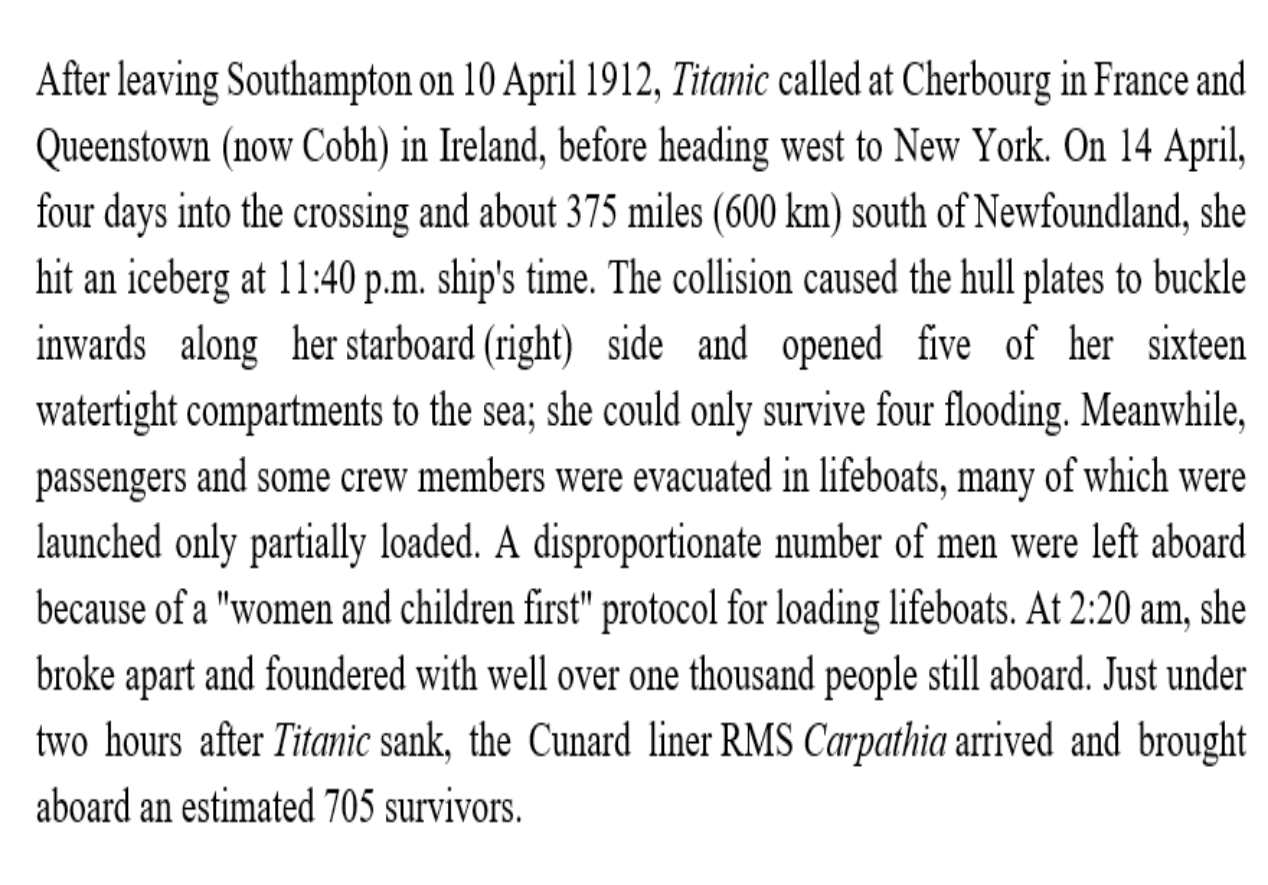
The debacle was met with overall stun and shock at the immense death toll, just as the administrative and operational disappointments that prompted it. Public requests in Britain and the United States prompted significant enhancements in sea security. One of their most significant inheritances was the foundation of the International Convention for the Safety of Life at Sea (SOLAS) in 1914, which actually oversees sea wellbeing. A few new remote guidelines were passed around the globe with an end goal to gain from the numerous slips up in remote correspondenceswhich might have saved a lot more passengers.
A large number of antiques have been recuperated and shown at exhibition halls around the globe. Titanic has gotten quite possibly the most celebrated boats ever, portrayed in various works of mainstream society, including books, people melodies, movies, shows, and commemorations. Titanic is the second biggest sea liner wreck on the planet, just being outperformed by her sister transport HMHS Britannic, nonetheless, she is the biggest sunk while in assistance as a liner, as Britannic was being used as a medical clinic transport at the hour of her sinking. The last overcomer of the sinking, Millvina Dean, matured two months at that point, passed on in 2009 at 97 years old.
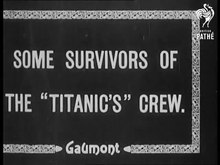
Titanic Disaster Genuine Footage (19111912)
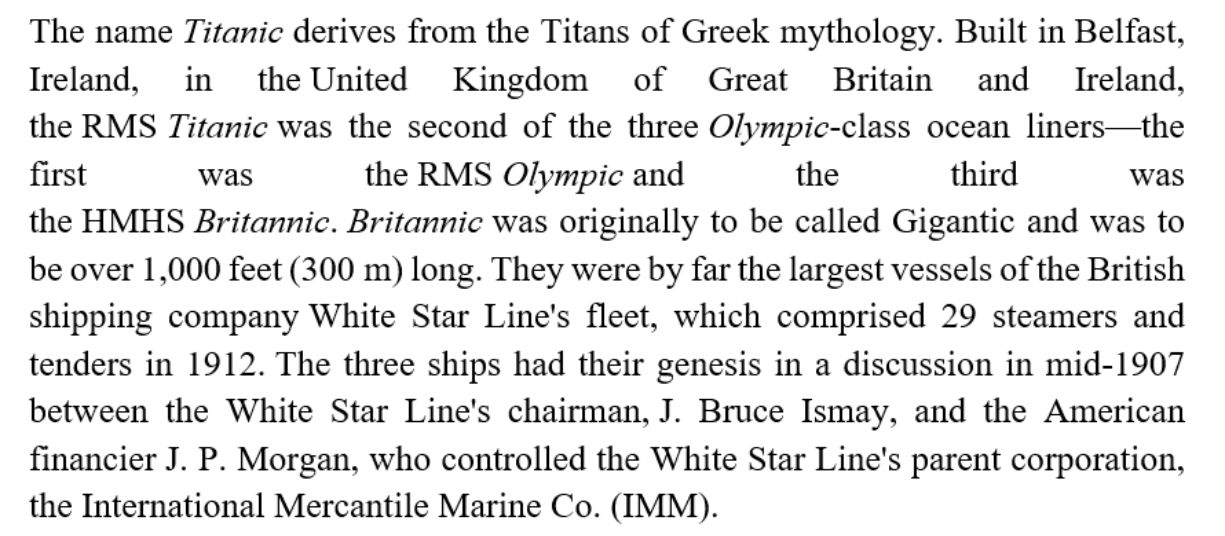
The White Star Line confronted an expanding challenge from its primary adversaries Cunard, which had as of late dispatched the Lusitania and the Mauretaniathe quickest traveler sends then in helpand the German lines Hamburg America and Norddeutscher Lloyd. Ismay liked to contend on size instead of speed and proposed to commission another class of liners that would be bigger than anything that had gone before just as being the final say regarding solace and luxury. The organization looked for an overhaul in their armada basically because of the Cunard monsters yet in addition to supplant their most established pair of traveler delivers still in assistance, being the SS Teutonic of 1889 and SS Majestic of 1890. Teutonic was supplanted by Olympic while Majestic was supplanted by Titanic. Superb would be brought once more into her old spot on White Star Line's New York administration after Titanic's loss.
The boats were developed by the Belfast shipbuilders Harland and Wolff, who had a since quite a while ago settled relationship with the White Star Line tracing all the way back to 1867. Harland and Wolff were given a lot of scope in planning ships for the White Star Line; the standard methodology was for the last to portray out an overall idea which the previous would remove and transform into a boat plan. Cost contemplations were generally low on the plan and Harland and Wolff was approved to spend what it required on the boats, in addition to a five percent benefit margin.
Harland and Wolff set their driving originators to work planning the Olympic-class vessels. The plan was administered by Lord Pirrie, a head of both Harland and Wolff and the White Star Line; maritime designer Thomas Andrews, the overseeing overseer of Harland and Wolff's plan division; Edward Wilding, Andrews' agent and answerable for figuring the boat's plan, dependability and trim; and Alexander Carlisle, the shipyard's main sketcher and general manager. Carlisle's duties incorporated the embellishments, gear and every broad course of action, including the execution of a proficient raft davit design.
On 29 July 1908, Harland and Wolff introduced the drawings to J. Bruce Ismay and other White Star Line heads. Ismay endorsed the plan and marked three "letters of arrangement" after two days, approving the beginning of construction. At this point the main boatwhich was later to get Olympichad no name, however was alluded to just as "Number 400", as it was Harland and Wolff's four hundredth frame. Titanic depended on an overhauled variant of a similar plan and was given the number 401.
1.1 Dimensions and layout

Starboard view of Titanic in 1912
Titanic was 882 feet 9 inches (269.06 m) long with a greatest broadness of 92 feet 6 inches (28.19 m). Her complete tallness, estimated from the base of the fall to the highest point of the scaffold, was 104 feet (32 m). She estimated 46,328 gross register tons and with a draft of 34 feet 7 inches (10.54 m), she uprooted 52,310 tons.
Next pageFont size:
Interval:
Bookmark:
Similar books «Story of Titanic : Please Save us»
Look at similar books to Story of Titanic : Please Save us. We have selected literature similar in name and meaning in the hope of providing readers with more options to find new, interesting, not yet read works.
Discussion, reviews of the book Story of Titanic : Please Save us and just readers' own opinions. Leave your comments, write what you think about the work, its meaning or the main characters. Specify what exactly you liked and what you didn't like, and why you think so.

